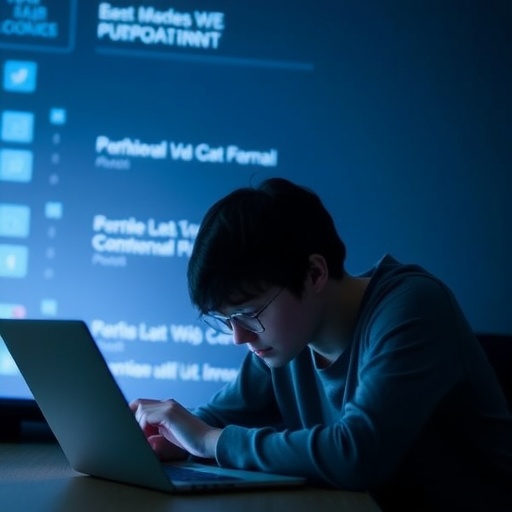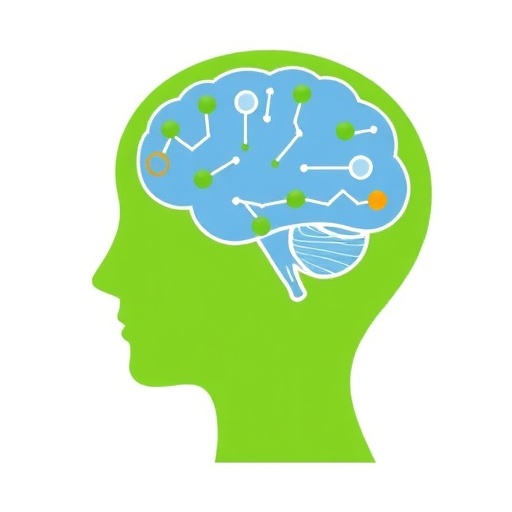In an era where digital connectivity dictates much of daily life, a groundbreaking longitudinal study has uncovered a potent and troubling link between loneliness and problematic internet use among adolescents aged 10 to 16. The research, spearheaded by Fukuya, Suyama, Ogawa, and their colleagues, offers an unprecedented examination of how emotional isolation may drive young individuals into maladaptive patterns of internet engagement, reshaping our understanding of adolescent mental health in the digital age.
Adolescence represents a critical developmental window where social bonds and identity formation are paramount. Yet, this demographic increasingly turns toward internet usage as a means of social interaction and emotional refuge. The study meticulously followed a cohort of adolescents over multiple years, parsing out the trajectory of internet usage patterns alongside evolving feelings of loneliness. The longitudinal nature of the research provides a robust framework to infer causality, rather than mere correlation, elucidating how persistent loneliness can precipitate escalating internet behaviors that verge on addiction.
At the core of this investigation lies the concept of “problematic internet use” (PIU), which encompasses excessive or poorly controlled preoccupations, urges, or behaviors regarding computer use and internet access that lead to impairment or distress. Unlike casual heavy internet use, PIU manifests with characteristics akin to behavioral addiction, including withdrawal, tolerance, and interference with daily functioning. The study employed validated psychometric tools to quantify PIU severity, ensuring rigorous classification within the adolescent sample.
Loneliness, operationalized as the subjective feeling of social isolation and inadequate companionship, was assessed through standardized psychological scales. The researchers highlighted the nuanced interplay between internal emotional states and external behavioral outcomes in digital environments. Their findings indicate that adolescents reporting higher baseline loneliness scores were significantly more likely to develop problematic internet use over the course of the study, revealing a temporal and directional association.
This revelation is particularly alarming because it challenges the common assumption that internet use inherently mitigates feelings of loneliness by fostering social connections. Instead, it appears that for vulnerable youth, the internet may act as an escape or coping mechanism rather than a genuine source of social fulfillment. The study’s data suggest a cyclical pattern where loneliness drives excessive internet use, which in turn exacerbates social withdrawal, reinforcing loneliness in a deleterious feedback loop.
Neurobiological insights further enrich the discussion. Problematic internet use has been associated with alterations in neural circuits governing reward processing, executive function, and emotional regulation. Adolescents, whose brains are still developing, may be especially susceptible to these neuroplastic changes, intensifying the risk for long-term maladaptive behaviors. The study calls attention to these developmental vulnerabilities, underscoring the urgency of tailored interventions during this formative period.
The researchers also explored socio-environmental factors that potentially moderate the loneliness-PIU relationship. Family dynamics, peer interactions, school environment, and socioeconomic status all emerged as influential contexts. Notably, adolescents lacking robust social support systems were more prone to gravitate toward online spaces for validation and interaction, amplifying their risk for problematic engagement.
Importantly, the study’s longitudinal design allowed for tracking changes over time, illustrating that initial loneliness could predict future PIU rather than being solely a consequence of it. This temporal dimension strengthens the argument for early psychological and social interventions aimed at preventing the cascade toward internet overuse and its attendant mental health consequences.
In practical terms, this research provides a clarion call for educators, parents, and mental health professionals to prioritize the identification and treatment of loneliness in young individuals. Proactive strategies that foster authentic social connectivity and resilience may serve as bulwarks against the tide of problematic internet use. Digital literacy programs emphasizing balanced use and emotional awareness are also critical components of a comprehensive preventative framework.
Moreover, clinicians are encouraged to integrate assessments of loneliness and internet use patterns into routine screenings for adolescent mental health. Recognizing the intertwined nature of these factors can enhance diagnostic precision and therapeutic outcomes. The study’s findings advocate for multidisciplinary approaches that address both emotional well-being and behavioral regulation in the context of digital media consumption.
From a policy perspective, these insights have profound implications. Public health campaigns and school-based mental health initiatives can be informed by this research to design evidence-based interventions. Furthermore, developers of digital platforms might consider integrating features that promote healthy interaction patterns and provide resources for those exhibiting signs of problematic use.
Crucially, the study also opens avenues for future research to delve deeper into protective factors that mitigate the transition from loneliness to PIU. Understanding resilience mechanisms, such as social skills training or mindfulness practices, could enrich intervention portfolios. Additionally, exploring the role of emerging technologies, including virtual reality and artificial intelligence, in shaping adolescent social experiences remains a fertile ground for inquiry.
In a societal context increasingly dominated by digital interfaces, the ramifications of this study extend beyond academia. It challenges us to rethink how we conceptualize social health in a techno-centric world and underscores the importance of nurturing genuine human connections amidst virtual landscapes.
The methodological rigor, comprehensive scope, and longitudinal approach of this study set it apart as a pivotal contribution in the fields of adolescent psychology, public health, and digital behavior research. As adolescent internet use becomes ubiquitous, such data-driven insights are invaluable in guiding ethical and effective practices aimed at safeguarding youth mental health.
The urgency and relevance of these findings cannot be overstated. With global adolescent populations immersed ever deeper into digital ecosystems, understanding and addressing the psychosocial factors underlying problematic internet use is paramount. This study lays a foundational stone for constructing a healthier digital future for the next generation, emphasizing empathy, connection, and balanced technology engagement.
In summary, the research led by Fukuya and colleagues shines a critical light on the dynamic between pervasive loneliness and escalating problematic internet use in adolescents. By elucidating causality through longitudinal analysis, it provides a crucial evidence base for interventions designed to break this harmful cycle. Stakeholders across domains must heed these findings to foster a supportive environment where young individuals can thrive both online and offline.
With the digital domain increasingly entwined with human experience, studies like this illuminate pathways to harness technology’s benefits without succumbing to its pitfalls. Understanding loneliness’s role in fuelling problematic internet use is a vital step toward cultivating digitally literate, emotionally resilient adolescents capable of navigating the complexities of contemporary social landscapes.
Subject of Research: The association between loneliness and problematic internet use among adolescents aged 10 to 16 over time.
Article Title: Association of Loneliness with Problematic Internet Use Among Adolescents Aged 10 to 16: a Longitudinal Study.
Article References:
Fukuya, Y., Suyama, S., Ogawa, S. et al. Association of Loneliness with Problematic Internet Use Among Adolescents Aged 10 to 16: a Longitudinal Study. Int J Ment Health Addiction (2025). https://doi.org/10.1007/s11469-025-01556-5
Image Credits: AI Generated
Tags: addiction and internet usage patternsdevelopmental impact of internet on adolescentsdigital connectivity and social interactionemotional isolation in youthemotional refuge through online engagementexcessive internet use and its consequencesloneliness and adolescent mental healthlongitudinal study on internet behaviorsmental health challenges in the digital ageproblematic internet use in teenssocial bonds during adolescenceunderstanding PIU in teenagers





